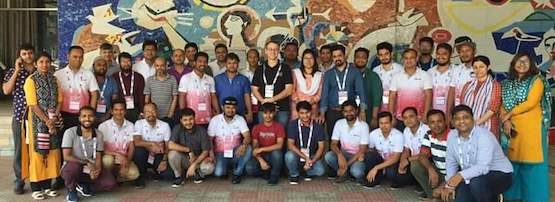
Last month I attended the 10th Bangladesh Network Operators Group (bdNOG10) conference held in Chattogram (the city formerly known as Chittagong), during which I participated in an IPv6 deployment workshop run by APNIC.
Like many economies around the world, IPv6 deployment in Bangladesh has been ‘glacially’ slow — growing only by 0.05% in the past three years. That said, it is a topic of growing interest among local ISPs who are exhausting and straining their finite IPv4 assets as Internet penetration increases in the world’s eighth most populous economy.
#Bangladesh ranked 5th largest internet using country in #Asia https://t.co/SsCU9nbVf3
— The Daily Star (@dailystarnews) October 7, 2018
Although awareness of the ability of IPv6 to assist with relieving this burden is high, many operators still prioritize it low when it comes to the cost-benefit of deploying it now; pointing to a lack of demand for IPv6 content as well the costs associated with upgrading legacy equipment and training staff.
This is why in-country training, in particular, training that is provided in cities outside of the capital such as those offered through bdNOG, is especially important in overcoming at least one of these barriers.
The four-day workshop included a mix of technical lectures, quizzes, and hands-on labs. The latter was really useful for practicing and troubleshooting what we learnt, as well as developing relationships with other participants — helping to enrich the bdNOG community.
For example, while doing the IPv6 BGP lab, one person in my group accidentally misconfigured their device. We all worked together to help discover the problem, and then with the assistance of the instructor, reconfigured it as a loopback IP, and prefix announcing.
Other topics discussed included IPv6 transition mechanisms (dual-stack/6rd/464XLAT/DS-Lite/NAT64), address planning, security and flow monitoring.
Learn more about which transition mechanism is right for your IPv6 deployment.
Since returning to work, I have already held discussions with our network team about progressing our deployment plans — IIG NovoCom Ltd deployed IPv6 on its backbone some years ago and we are working with our downstream provider to deploy it across our whole network — and updated them on the best current practices that we learnt. We agree that there is scope to improve the efficiency of our IPv6 address planning, do more planning, and do more R&D and testing of IPv6 transition mechanisms, end-user devices, traffic monitoring and security issues.
I remain in contact with other participants from the workshop, am following their efforts, and sharing our development strategies. I hope our shared capability and enthusiasm will see more community involvement in increasing IPv6 deployment in Bangladesh.
Farha Diba is a System Engineer for NovoCom Limited.
The views expressed by the authors of this blog are their own and do not necessarily reflect the views of APNIC. Please note a Code of Conduct applies to this blog.

There is no such thing as 646xlat, it is 464XLAT.
Also NAT64, not NAT 64.
Thanks Jordi!! It was my typo!